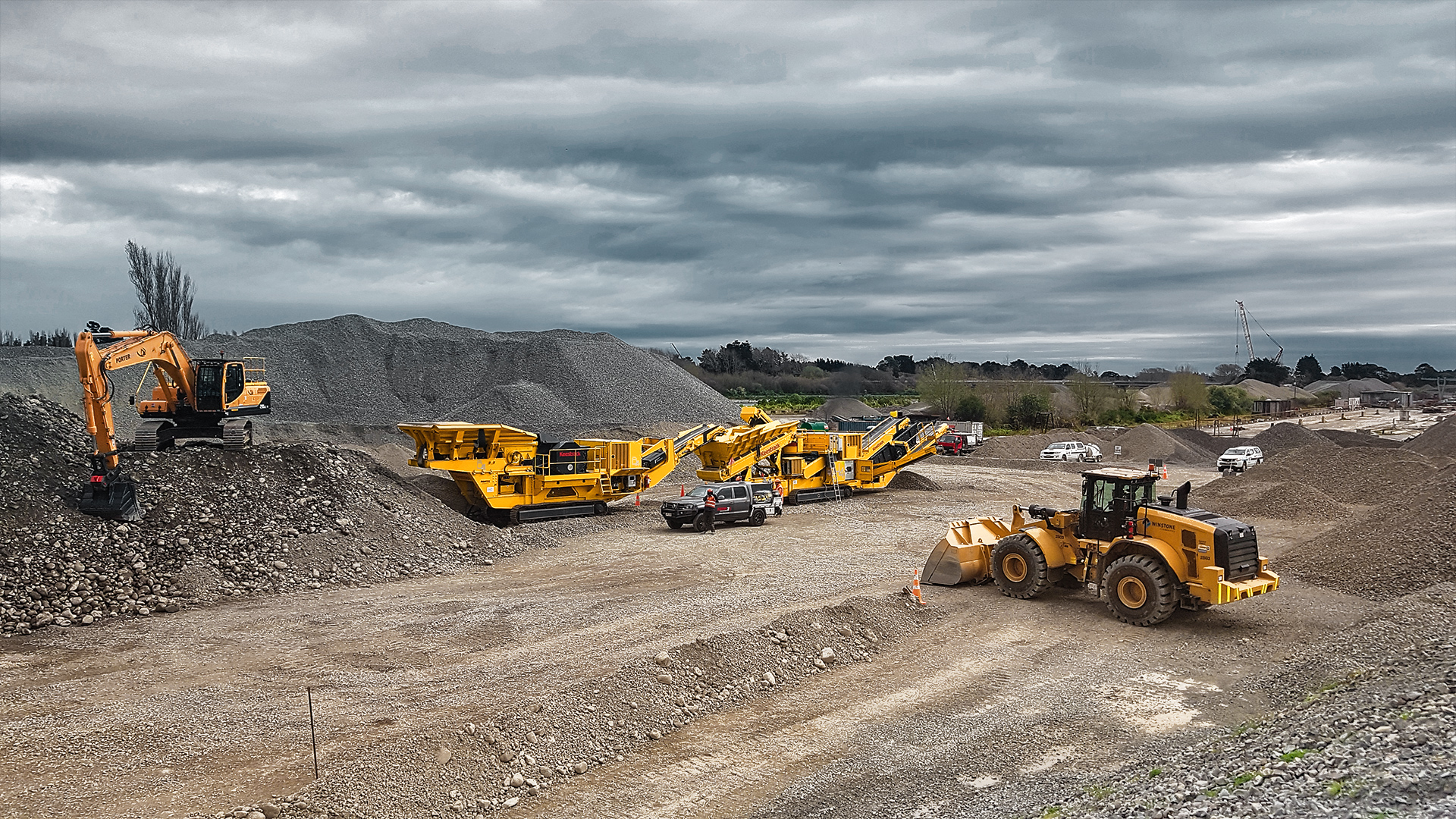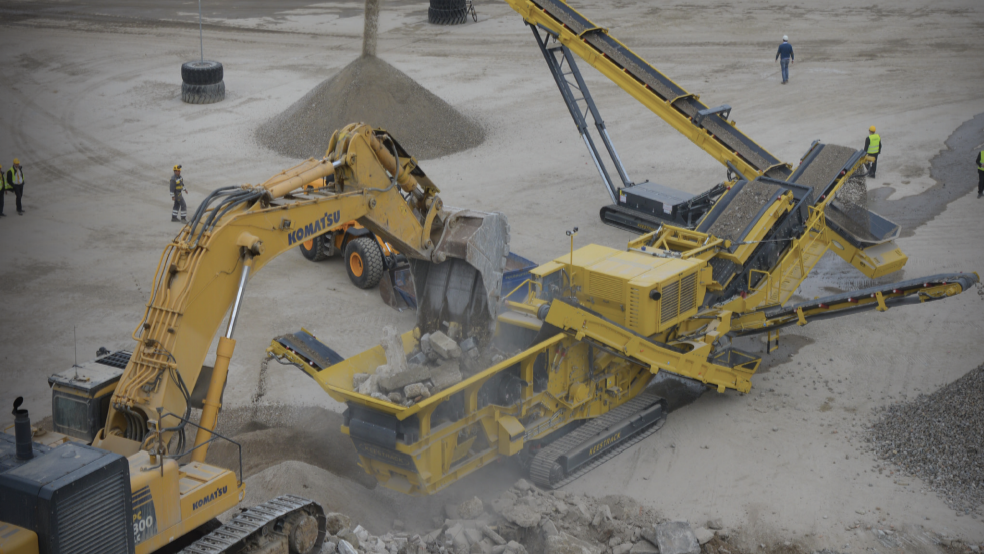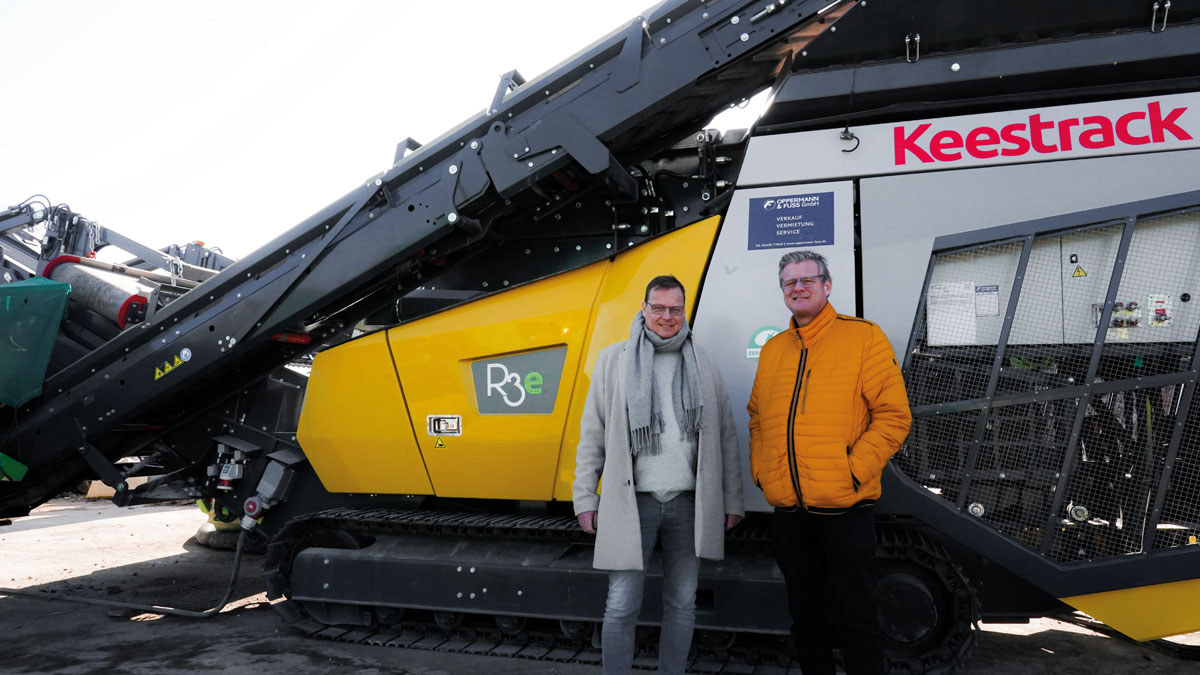The difference between a good and excellent tool is what it's used for. Knowing which crushing plant to use is similar; all are good, but which option helps best achieve your product and spec?
The goal is to sell rock/gravel, not just buy a crusher; the crushing plant is the means to that end. This article will discuss Mobile Cone Crushers and some questions we can answer to determine a Cones suitability to your Quarry. (We use Quarry broadly here, it could equally apply to a contractor or recycler.)

What is the feed material?
A Cone Crusher has set itself apart as a reliable and capable crusher covering both secondary and tertiary crushing roles in quarries big and small. However, this workhorse does have its limitations, with fines content in the infeed being one that cannot be overlooked.
"Infeed fines" is the amount of material equal to or smaller than the Cone's "C.S.S." or closed-side setting. As a rule, the percentage of infeed fines for secondary crushing should be less than 25%. This needs reducing to 10% for tertiary crushing; that said, it is always advisable to screen out fines under 5mm.
Removing fine and sticky material from the infeed is necessary to prevent "pancaking" or "packing" caused by the fine or sticky material compressing inside the crushing chamber.
"Packing" or "pancaking" is one of the primary causes of poor product quality and high cone crusher pressures. To achieve an ideal infeed for a Cone Crusher, using a pre-screen process to remove fines is typical.
What are the versatility requirements?
Mobile Crushers are versatile plant; what a Quarrying business needs to ascertain is: how often will the mobile plant be shifted to a different site? And how often will it be required to move on-site? Cone Crushers are typically used in conjunction with other plants requiring an extended or involved setup process.
Primarily built for secondary crushing roles, Cone Crushers have limitations in the mobile crushing sector, their infeed size limitation. Therefore, in most scenarios, a Cone Crusher will need to be paired with a Jaw Crusher or pre-screen to size the infeed appropriately for processing.
Like all compression-based crushers, Cone Crushers have a very real production speed limit. The limit of their processing speed is determined by the physical opening known as the "O.S.S." or open-side setting, where the material exits the crusher chamber.
Compared to an Impact Crusher, which has no actual closed size or open side dimension, a Cone Crusher can only move so much material between the concave and mantle before clogging up. This is a hard production limit.
Crusher configuration for Cone Crushers intended to cover multiple infeed, and end product sizes is another consideration for Quarries. Cone crushers have optimal eccentric and wear parts available depending on what the desired output is to produce. For example, a CH430 (Keestrack H4e) has eight eccentric throw settings ranging from 16mm – 36mm, seven concave options from extra fine (E.F.) to extra coarse (E.C.), and four mantle options A, S, B and E.F. A combination of these parts will give you a specific C.C.S. range to work within, but no configuration covers all sizes.
As such, if you need to make a significant change in product size, reconfiguring these parts will be required.
Compared to an Impact Crusher, which is easily changed from a setting (like C.S.S.) of 15mm to 80mm (or larger) in a few minutes, Cone Crushers require significantly more effort, involving disassembly and reassembly and a crane or similar to do this. It can take anywhere between a few hours to a full day to complete a configuration change on a Cone Crusher.
On the other hand, having this level of fine adjustment does have benefits. For high volume products where consistency is key, Cone Crushers are very good at providing repeatable results day after day with little operator intervention compared to Impactors.
Cone Crushers like Jaws have a low reduction ratio of 1:3 to 1:5 depending on the material. If higher reductions are required, multiple reduction stages or a close circuit system are necessitated to achieve the final size.

Operating costs
The operating cost of a Cone Crusher must be considered in context. On their own, the cost per tonne is low, but this is rare in the case of any mobile Cone as the process regularly requires two or more pieces of plant to have a functioning crushing operation.
As a minimum, you would expect to be running a Jaw and Cone the compounded costs quickly add up. Double the fuel, wear parts, transport, maintenance, insurance, and your cost per tonne is no longer for a single machine. Add a screening plant, and this is even higher while all limited by the slowest machine in the process.
When deciding which type of Crusher you are investing in, calculating your total cost per tonne and thus profit, will provide the best baseline to compare the benefits of a machine to the business.
Ease of use
Cone Crushers are relativity simple to operate, with virtually all modern mobile Cone Crushers being computer-controlled. However, even automation cannot compensate for poor setup or infeed.
When using a Cone Crusher some items need consideration to ensure productive, trouble-free operation. Such as supplying enough feed to keep the crushing chamber choked, not trickle feeding the Crusher, and ensuring the feed is not segregated are a few things that need addressing during setup. In addition, when working with multiple machines, balancing the product flow to not over or under feed is also a factor.
The maintenance aspects of a Cone Crusher may not make it suitable for everyone. Cone's are one of the oldest crusher types dating back to the 1920s; modern Cone Crushers use complex lubricating and hydraulic systems to function. This level of complexity may be unattractive to some as they require special tooling and or knowledge to maintain them correctly.
Is a Cone Crusher right for my business?
In summary, a Cone Crusher could be the right solution for your business if it matches your material source, required output or specification, and is versatile enough to cover the range of products the Quarry is producing.
With potentially better crushing solutions available to meet secondary, tertiary and even primary roles, basing buying decisions on facts and figures relevant to the business will help you decide.
If you have a product that is suited to Cone production or have already invested in a plant that supplements a Cone Crusher, a Cone could be a great option.
If you are looking for a Cone Crusher as a stand-alone piece of equipment, make sure you do your homework. Cones Crushers are excellent for the task they were intended for but do come with many limitations.
* Based on standard weights and dimensions, please check with the transport company as permit requirements vary by region and can change.
** C.S.S. Range is directly affected by the mantle type used, these numbers reflect the minimum and maximum sizing that can be achieved using the finest and coarsest mantle. Inlet feed size directly correlates with the mantle type.
***Post screen is optional - we supply post-screen equipped Cone Crushers by default.
**** Tonnes per hour is determined by Mantle and C.S.S. A coarse Mantle with a large C.S.S. will have high throughput, by contrast, an extra fine liner with the smallest C.S.S. will have the lowest throughput.
*****Assume 1,000 working machine hours at 90% optimal production per hour.












